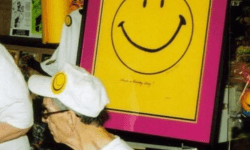Designers Take Note – Designs can be too ‘Obvious’ for a Design Patent
There are two types of patents* – utility patents and design patents. Utility patents address what something is and how it works. Design patents address how something looks. An example of a utility patent is a patent for a better mousetrap with a new way of catching mice. An example of a design patent is a patent that protects how the mousetrap looks, say, for example, if it resembled a piece of cheese.
Today, our topic is design patents.
To receive a design patent, a design must be (a) novel and (b) non-obvious. Remember that design patents rely on the appearance of an object, not how it works, so we must be able to evaluate its appearance. Here’s how the USPTO and the courts will determine whether a design is ‘novel’:
[I]f, in the eye of an ordinary observer, giving such attention as a purchaser usually gives, two designs are substantially the same, if the resemblance is such as to deceive such an observer, inducing him to purchase one supposing it to be the other . . . . (Emphasis supplied).
This is known as the ‘ordinary observer test.’ In other words, if two designs are so similar that an ‘ordinary observer’ would mistake a later design for the earlier design, then the later design is not novel and is anticipated by the earlier design. In practical terms, that means the two designs must be very, very close, if not identical.
That’s the easy part. On to obviousness.
In general, design patent ‘obviousness’ involves combining two or more earlier designs to create the later design, rendering the later design ‘obvious’ and not patentable.
But wait a minute. Can’t every ornamental design be a combination of earlier design elements? Consider the smiley face, the 1963 creation by graphic artist Harvey Ball (that’s him in the image above). It’s a yellow circle, a couple of dots and a curved line or two – but by 1971, 50 million smiley face buttons were sold. Certainly, the smiley face design, made from old elements, was greater than the sum of its parts.
So how to determine whether the sum of old design elements renders a new design obvious and not patentable?
For many years, the courts have applied what’s known as the Rosen and Durling tests, after the parties in two court cases. Under the Rosen and Durling test, the USPTO (or a court) must find a prior design that is “basically the same as the claimed design” when considering the design as a whole. If such a prior design exists, then the USPTO or the court will consider whether an “ordinary designer” would combine a second prior design to the ‘basically the same’ reference to come up with the new design.
In practical terms, the USPTO and the courts are reluctant to conclude that a prior design is “basically the same” as a new design, so design patents and applications have been largely immune from obviousness issues. As a result, design patents have become more important to innovators as utility patents have become harder to enforce.
That’s about to change. Some years ago, the U.S. Supreme Court seriously messed with the issue of obviousness in the area of utility patents, rejecting rigid formulae for determining obviousness and concluding that courts and patent examiners must follow a loose, flexible, more of an ‘I’ll know it when I see it’ approach to utility patent obviousness. Those loose, flexible criteria for obviousness have never been applied to design patents – until now, that is.
The case is LKQ Corp. v GM, which is currently pending before the Federal Circuit. GM produces cars and obtained a design patent for the fender of one of its cars. LKQ is a manufacturer of replacement fenders and wants to produce copies of GM fenders freely, without worrying about GM’s design patents. A panel of three judges at the Federal Circuit rejected LKQ’s challenge, concluding that the prior design presented by LKQ was not ‘basically the same’ as the GM design under Rosen/Durling and lamenting that the panel could not change Federal Circuit precedent without the participation of all of the Federal Circuit judges (there are twelve in total).
Well, all twelve judges are now participating and heard arguments earlier this year. It’s clear from the judge’s questions that the law is about to change, and in a way not beneficial to designers and design patent owners. Exactly what the new law will be remains to be seen. We expect a decision this summer and will keep you posted.
*Actually, there are three. Plant patents are outside the scope of this article.


